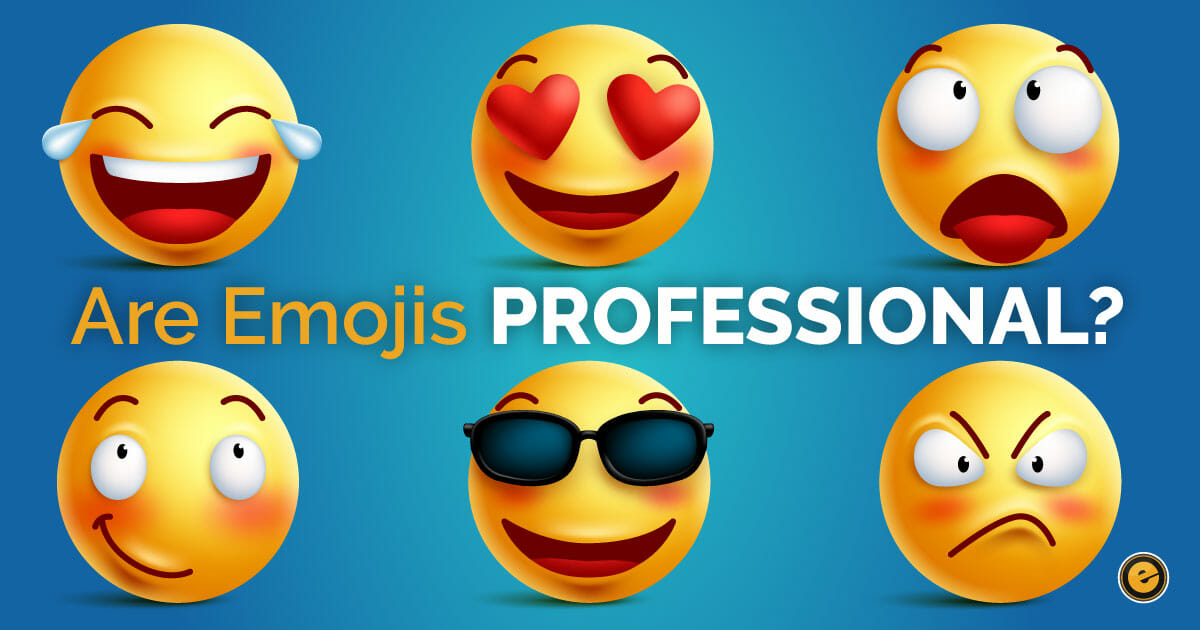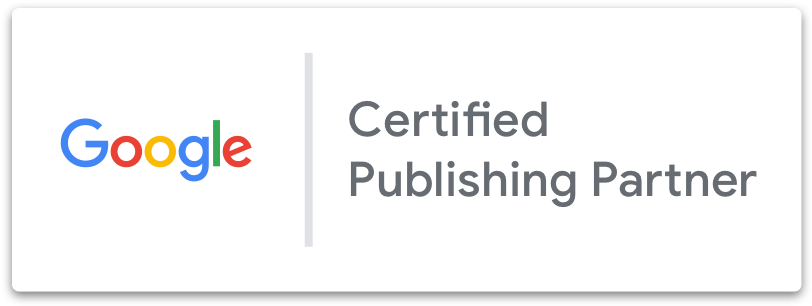
You’ve seen them in text messages. You’ve seen them on Facebook, Twitter, Instagram and a long list of other social medial platforms. You may have even seen them decorating billboards or personalizing the advertisements you see in real life or in print.
Emoji have evolved way beyond adding some flavor or personality to instant messaging. They’re a full-fledged cultural phenomenon.
The question many businesses are now asking is whether it makes sense for them to use emoji in their own advertising. Specifically, they’d like to know how their use of emoji will affect their perceived professionalism or impact their branding efforts.
It’s certainly a question worth asking. Emoji, when executed the right way, can help make your company’s social media posts more personable and inviting. Carelessly used emoji can send the wrong message about your company, so understanding the do’s and don’ts of these iconic digital characters is a valuable exercise for companies of any size.
Breaking Down Emoji Basics
Knowing a little more about what emoji are and where they come from will help you decide how and if you want to work them into your brand’s social media strategy.
Emoji were introduced in the late 1990s by a Japanese mobile phone company as a means for users to communicate with pictures. The trend caught on quickly overseas and eventually made its way to the United States. Today, emoji are a near universal part of popular culture and communication on social media.
What Should My Business Know About Emoji?
Now you have a basic understanding of what emoji are and where they came from. But can these tiny symbols really make that much of a difference for your brand? Multiple studies point towards emoji impacting your long-term marketing strategy whether you like it or not.
Here are a few major takeaways that every business should know about emoji in 2018:
Emoji Are Ubiquitous on Social Media
Waiting for interest in emoji to peter out is not a realistic strategy. That’s because the communication method is already so widely used. There’s a good chance that much of your customer base is already using emoji on social media.
In fact, a study noted that 92 percent of the online population use emoji in some capacity. More than 78 percent of women use emoji regularly, while just 60 percent of men use them often.
Emoji Consistently Improve Engagement
It’s hard to deny that emoji are already a pervasive part of pop culture. A recent study performed by Twitter reported that ads that ran on the platform that used emoji saw a 10% increase in engagement over those that did not. These findings strongly suggest that properly integrating emoji into your social media strategy will produce measurable results.
Emoji Stand Out on Visual Platforms
Twitter isn’t the only platform where emoji have proven to have major influence over user behavior. According to another recent study, adding emoji to Instagram posts lead to 47.7 percent more engagement for that particular post.
Comparing the impact of emoji on Twitter vs. Instagram suggests that this social media strategy is especially effective on primarily visual platforms like Instagram. Your brand should consider where it can make the biggest impact on social media with emoji before you start rolling out your strategy.
Big Names Already Use Emoji Branding
If you’re still not sure if emoji are appropriate for elevating your brand, then take a look at the world-famous companies that are already leveraging emoji in their social media messages.
🍕🍕🍕🍕🍕🍕🍕🍕🍕
🍕🍕🍕🍕🍕🍕🍕🍕
🍕🍕🍕🍕🍕🍕🍕
🍕🍕🍕🍕🍕🍕
🍕🍕🍕🍕🍕
🍕🍕🍕🍕
🍕🍕🍕
🍕🍕
🍕— Domino’s Pizza (@dominos) May 12, 2015
Domino’s has been bold in its experimentation with eye-catching emoji advertising. For a short time, Domino’s even devised a way to let customers order pizza via emoji.
🍔 Until it has square patties, it’s wrong.
— Wendy’s (@Wendys) October 30, 2017
In general, Wendy’s goes for a cheeky, nonchalant tone in its social media advertising. In cases like these, it makes sense to use informal communication tactics like emoji because they fit the brand voice perfectly.
🎆🎆🎆🎆🎆🇺🇸🇺🇸🇺🇸🇺🇸🇺🇸🇺🇸🇺🇸
🎆🎆🎆🎆🎆🍻🍻🍻🍻🍻🍻🍻
🎆🎆🎆🎆🎆🇺🇸🇺🇸🇺🇸🇺🇸🇺🇸🇺🇸🇺🇸
🎆🎆🎆🎆🎆🍻🍻🍻🍻🍻🍻🍻
🇺🇸🇺🇸🇺🇸🇺🇸🇺🇸🇺🇸🇺🇸🇺🇸🇺🇸🇺🇸🇺🇸🇺🇸
🍻🍻🍻🍻🍻🍻🍻🍻🍻🍻🍻🍻
🇺🇸🇺🇸🇺🇸🇺🇸🇺🇸🇺🇸🇺🇸🇺🇸🇺🇸🇺🇸🇺🇸🇺🇸#4thofJuly— Bud Light (@budlight) July 4, 2014
Sometimes companies like Budweiser use emoji to humanize the brand and build better relationships with their customers. When done correctly, companies can leave a lasting and positive impression their prospective clients.
These are just a few ways that major, established brands have used emoji to boost engagement with customers. Notice how many of these brands are related to lifestyle, food and other down-to-earth products that are likely to strike a familiar cords with a laid-back audience.
This gives you a great frame of reference for the types of customers that might be most attracted to ads featuring emoji and how those emoji might be used to catch a consumer’s interest while they browse the internet. These certainly aren’t the only ways that emoji can be used, but these are among the most straightforward.
Using Emoji in Business the Right Way
Consider that major brands are already implementing emoji into their social media marketing strategy. There are key opportunities for your brand to leverage this visual method of communication.
The question is less if emoji are appropriate and more how your company can use emoji in an appropriate way. The following strategies can help your brand to streamline this strategic decision-making process.
Less Is Much More
You may have seen examples of companies that use so many emoji in a single tweet that they can fill the whole screen. There may be some instances where such a strategy is effective, but in most cases your goal is to use as few emoji as possible.
One or two relevant, cleverly curated emoji can help add life and personality to a social media post. Three or four unrelated or redundant emoji, on the other hand, will make a social media post (and the company that posted it) seem out of touch or unprofessional. Yes, it is possible to get too carried away with emoji infatuation.
The Best Strategy Is No Strategy
It makes sense for your brand to look for opportunities to personalize social media by adding an emoji to a post now and then. On the other hand, it would be counterproductive to set emoji quotas or force them into posts where it might not be relevant to include an emoji, such as a tweet announcing a press release.
The best uses of emoji are natural, organic and fun. Setting an emoji schedule or strategy in stone is more likely to make your brand appear to be trying too hard. It makes much more sense to use emoji sparingly and off the cuff.
Let Emoji Complement Copy
At the end of the day, the tone and messaging of your content will determine if adding emoji is appropriate. Any time your brand is posting about something fun, lighthearted or relevant to the interests of your audience, consider working in an emoji into the body of your post.
Conversely, if your content is highly complex or dealing with a hot-button or serious issue, then it makes sense to avoid using emoji in such a case.
Avoid Major Emoji on Social Media Mishaps
Now your brand has a sense for when to use emoji appropriately. Continue reviewing how your competitors and successful brands in other industries have used emoji for ideas on implementing your own emoji content.
Last but not least, remember that it’s much easier to use too many emoji than it is to use too few. Overdoing it or choosing the wrong emoji will make posts feel forced and unnatural.
Want more tips on how and when to implement a new social media strategy? Want to know which social media platform is the best launch pad for your latest branding initiative? Check out some of our other blog posts for helpful tips on increasing engagement and drawing in new customers via social media.


Emojiness mishaps LOL
Good thing for me these only happen on my phone with spammers
I love using emojis!! I think it’s fun having a text convo using nothing but emojis lol.
My 11 year old daughter is so obsessed with emojis! She has merchandise that isn’t even associated with phones with emojis on them (pajamas, lunchboxes, etc). There’s no doubt that these are not going away any time soon. I think that this next generation is going to be even more into them then the younger consumers are today.
While I agree that emojis aren’t going anywhere anytime soon I think that businesses have to be extremely careful about keeping them not only professional but still appealing to their buyer persona. Making sure you stay relevant and on brand is essential. Also, whoever is posting the emojis needs to be sure they are up on current trends. One day an emoji can mean one thing and the next day something else, that may not want to be an image portrayed by the business. Great post and something for every business to consider.
I think that businesses can use Emojis and still maintain a professional voice. However, they should only be used appropriately. It is important for businesses to remember that their social media presence is a part of their reputation online.
Emojis are their own language, one that is primarily spoken between the younger crowds. I think that if business are to keep gaining new customers then they need to remain at the forefront of technology and change in all areas – website design, content distribution, social media and of course, using emojis. Just be careful you know EXACTLY what each emoji stands for, both in intent – and in trend.
I heard that they made a “Moby Dick” emoji book. These emojis are getting out of hand in my opinion.
We’ve GOT to see that! Starting to feel like the emoji fad might die in the next couple of years, but we’ll see.